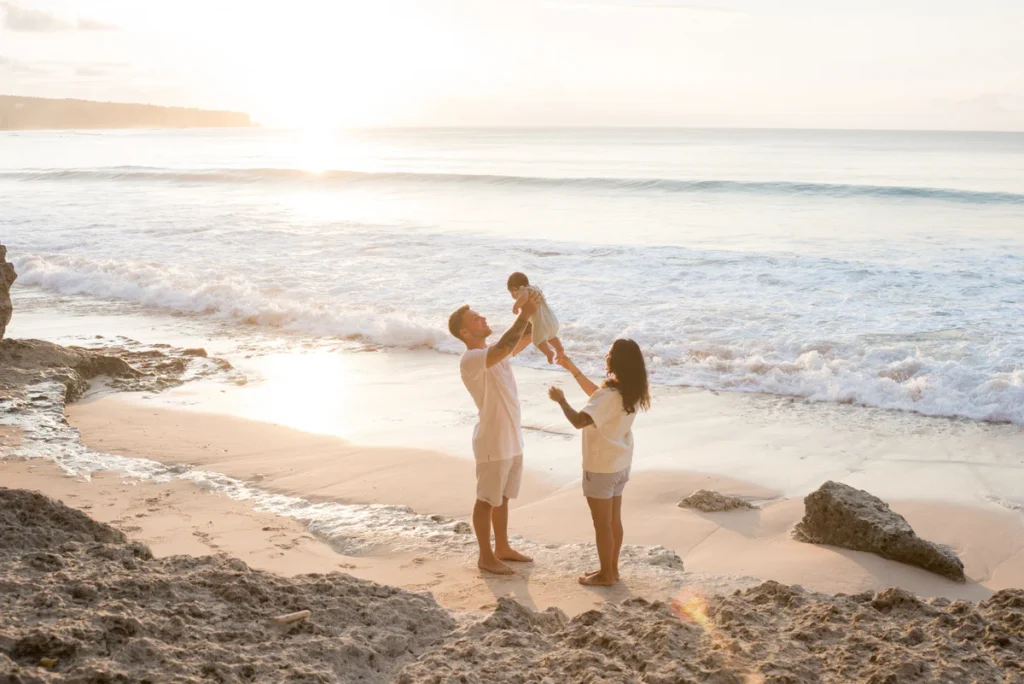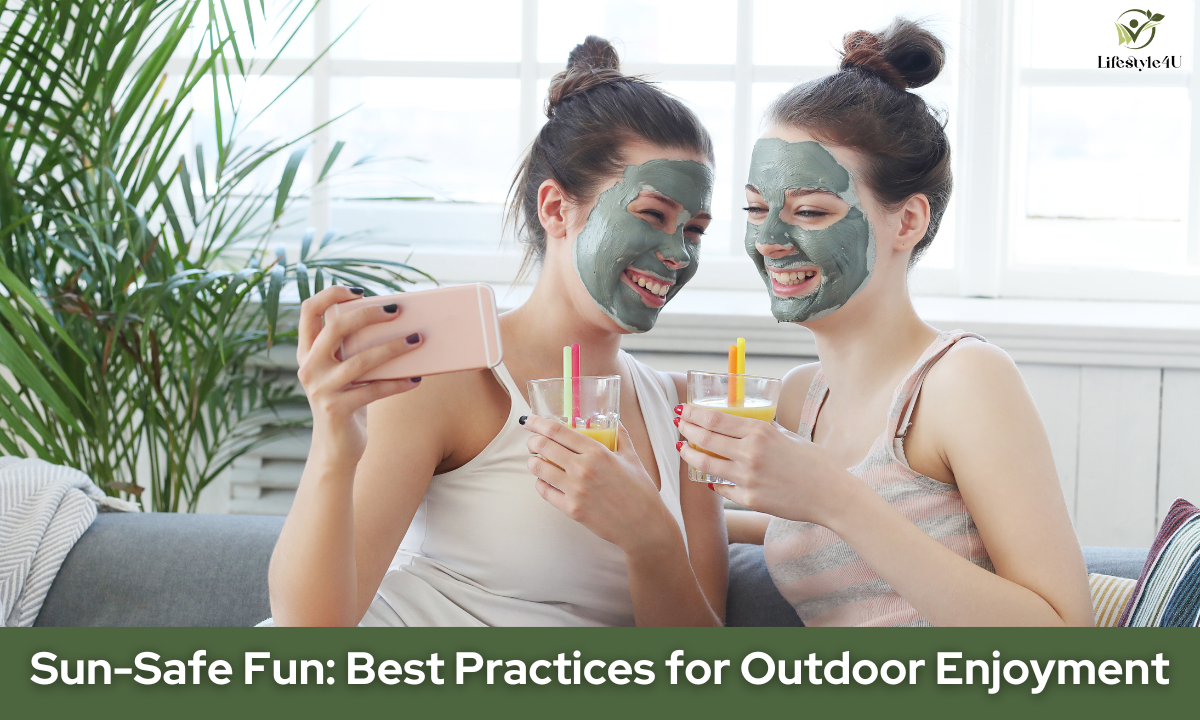Embrace the Sun: Safety First
Basking in the sun is one of life’s simple pleasures. However, it’s crucial to enjoy it safely. To make the most of your time outdoors, follow these essential tips. They ensure a delightful and secure experience.
Wear Sunscreen: Your Skin's Best Friend

Sunscreen is non-negotiable. Apply a broad-spectrum SPF of at least 30. It shields your skin from harmful UV rays. Remember to reapply every two hours. Don’t forget areas like ears, neck, and feet. Even on cloudy days, UV rays can penetrate, so always be prepared.
Choose Protective Clothing: Stay Covered

Opt for clothing that offers protection. Light, long-sleeved shirts and wide-brimmed hats are ideal. They provide a barrier against the sun. Sunglasses with UV protection are also essential. They protect your eyes from harmful rays, reducing the risk of cataracts.
Hydrate Often: Water Is Key

Staying hydrated is vital, especially in the sun. Drink plenty of water throughout the day. Avoid sugary drinks and alcohol. They can dehydrate you quickly. Carry a reusable water bottle for easy access. Hydration helps maintain your energy and well-being.
Seek Shade: Limit Direct Sun Exposure
Direct sunlight can be intense, especially during peak hours. Aim to spend time in the shade between 10 AM and 4 PM. Use umbrellas or seek out natural shade. This reduces the risk of sunburn and heat-related illnesses.
Apply Insect Repellent: Stay Bite-Free
Outdoors, insects can be a nuisance. Use insect repellent to keep them at bay. Look for products that protect against mosquitoes and ticks. This is crucial in areas where insect-borne diseases are prevalent. Apply repellent after sunscreen for maximum effectiveness.
Practice Sun Safety Year-Round
Sun safety isn’t just for summer. UV rays can cause damage year-round. During winter, sun reflecting off snow can be harmful. Apply sunscreen even when it’s cold. Enjoy outdoor activities with peace of mind, knowing you’re protected.
Be Mindful of Medication Side Effects
Some medications can increase sun sensitivity. Check labels for warnings about sun exposure. If in doubt, consult your doctor. Adjust your sun safety routine accordingly. This helps prevent adverse reactions and keeps you safe.
Check the UV Index: Plan Ahead

The UV index forecasts the strength of sun rays. Check it daily before heading outdoors. Higher values mean greater risk. Plan your activities around lower UV times. This proactive approach ensures better sun protection.
Keep an Eye on Your Skin: Regular Checks
Monitor your skin for changes. Look out for new moles or growths. Early detection is key to preventing skin cancer. Schedule regular check-ups with a dermatologist. Staying vigilant helps maintain your skin’s health.
Enjoy the Outdoors Responsibly

Spending time outdoors boosts mood and health. Follow these guidelines to enjoy it safely. Being mindful of sun exposure keeps you protected. Relish the sunshine, knowing you’ve taken the right precautions.
Understand the Signs of Heat-Related Illnesses
Heat-related illnesses can sneak up on you. Be aware of symptoms like dizziness, nausea, or excessive sweating. Heat exhaustion and heatstroke are serious conditions. If you experience these symptoms, seek shade and hydrate immediately. In severe cases, medical attention is necessary.
Avoid Peak Sun Hours: Smart Scheduling
Avoid the sun’s peak hours to reduce risk. Plan outdoor activities in the early morning or late afternoon. This minimizes UV exposure and prevents overheating. Smart scheduling helps you enjoy the sun while staying safe.
Use Sun-Protective Accessories: Extra Defense
Accessories like UV-blocking umbrellas and beach tents offer extra protection. They provide shade and reduce direct exposure. Use them when relaxing outdoors to create a safe, sun-protected space. They are especially useful during prolonged outdoor activities.
Educate Children About Sun Safety
Children are more vulnerable to sun damage. Teach them about the importance of sunscreen and protective clothing. Encourage them to seek shade and stay hydrated. Instilling these habits early ensures they grow up with good sun safety practices.
Balance Sun Exposure with Vitamin D Intake

While sun exposure is vital for Vitamin D, balance is key. Aim for short periods of sun exposure without sunscreen to boost Vitamin D levels. But, don’t overdo it. Too much sun can lead to skin damage and increase cancer risk. Find a healthy balance to maintain overall well-being.
Keep Cool with Outdoor Cooling Techniques
Staying cool helps you enjoy the outdoors longer. Use portable fans, cooling towels, and water misters to regulate body temperature. These tools are effective in hot weather. They enhance comfort and reduce the risk of heat-related illnesses.
Invest in Quality Sun-Protective Gear
Invest in high-quality sun-protective gear. Look for clothing with a UPF rating and accessories designed for sun protection. Quality gear provides better defense against harmful rays. It’s a worthwhile investment for your health and safety.
Plan Breaks During Outdoor Activities
When engaging in outdoor activities, plan regular breaks. Rest in the shade to cool down and rehydrate. Frequent breaks help prevent overexertion and reduce sun exposure. This approach ensures you can enjoy activities without risk.
Understand Your Skin Type: Personalized Protection
Be Prepared for Emergencies
Different skin types require different levels of protection. Fair skin is more prone to sunburn, while darker skin also needs protection to avoid damage. Know your skin type and adjust your sun safety practices accordingly. Personalized protection helps keep your skin healthy.
Prepare for sun-related emergencies. Carry a first-aid kit that includes items for treating sunburn and heat-related conditions. Knowing how to handle emergencies can make a big difference. It’s a proactive step to ensure safety during outdoor adventures.
Enjoy a Sun-Safe Lifestyle
A sun-safe lifestyle is about balance and awareness. With the right precautions, you can enjoy the outdoors safely. Embrace these tips and make sun safety a part of your routine. A mindful approach to sun exposure ensures you reap the benefits of outdoor activities without the risks.
Maintain Regular Sun Safety Habits: A Lifelong Commitment

Sun safety should be a lifelong commitment. Make it a habit to incorporate sun protection into your daily routine. Whether it’s applying sunscreen or wearing protective clothing, these practices should become second nature. Consistency is key to long-term skin health and cancer prevention.
Educate Friends and Family: Spread Awareness
Share your knowledge of sun safety with friends and family. Educating others helps create a community that prioritizes health. Encourage them to adopt safe sun practices. A collective effort can lead to a significant reduction in sun-related health issues.
Enjoy the Outdoors with Confidence

With these comprehensive sun safety strategies, you can enjoy the outdoors with confidence. Being prepared and proactive ensures that you make the most of sunny days without the risk of harm. Embrace the sun, enjoy nature, and stay safe with these practical tips.
Conclusion
Embracing the sun and enjoying the outdoors can significantly boost your mood and overall well-being. By following sun safety practices, you protect your skin and health from potential harm. Remember to wear sunscreen, seek shade, and stay hydrated. With these simple yet effective strategies, you can make the most of sunny days while ensuring your safety and health. Always be proactive

Frequently Asked Questions
The best types of sunscreen for outdoor activities are broad-spectrum, water-resistant sunscreens with an SPF of 30 or higher. These provide protection against both UVA and UVB rays and are less likely to wash off with sweat or water exposure.
Sunscreen should be reapplied every two hours, or immediately after swimming, sweating, or towel drying. This ensures continuous protection from harmful UV rays.
Wear long-sleeved shirts, long pants, or skirts made of tightly woven fabric. Darker colors generally offer more protection than lighter ones. Additionally, consider clothing with an ultraviolet protection factor (UPF) label.
Protect your face by wearing a wide-brimmed hat that shades your face, ears, and neck. For your eyes, wear sunglasses that block 100% of UVA and UVB rays. Look for glasses that wrap around and offer full coverage.
In addition to sunscreen and protective clothing, seek shade during peak sun hours (10 a.m. to 4 p.m.), stay hydrated by drinking plenty of water, and avoid tanning beds. Using umbrellas or canopies when spending extended time outdoors can also provide additional protection.

